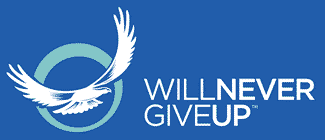Workplace health and safety practices have come a long way in recent times, and most modern workplaces have a clear understanding that putting health and safety procedures into practice requires much more than simply meeting the minimum requirements of a compliance checklist.
Everyone knows that effective communication is crucial, but that doesn’t always mean that effective communication is practised.
I have written in the past about the importance of safety leaders, and would like to take some time to look at the vital role these safety leaders play when it comes to imparting messages of health and safety where linguistic differences present challenges to communication.
When creating a safe and healthy work environment, it is not enough to simply send out information. Those sending the information must be sure that it has been received and understood, and then they must go one step further to make sure that there is ongoing workplace dialogue between all responsible for health and safety in the workplace.
But who is responsible? The simple answer is everyone. Employees, employers, owners, managers, trainers, and supervisors can, and must, contribute to a safer work environment for all. This is the best and only way to reduce unacceptable risks of injury and illness.
Proper consultation can take time and effort but will end up saving everyone in the long run. Part of this consultation means ensuring that everyone is encouraged to speak up about health and safety issues and that once dialogue is encouraged, it is also enabled. Clear processes for reporting incidents and issues are mandatory health and safety requirements, but they should also be encouraged through a workplace’s culture and support network.
Rigid command structures or an unwillingness for employees to question authority should never be the basis for anyone feeling unsafe at work.
WorkSafe Victoria have created some excellent resources to help with workplace communication. Their guide Communicating occupational health and safety across languages helps with compliance in the state of Victoria, but similar guides are available for other states and territories from the relevant work health and safety authority.
Know the workforce
As safety leaders are a part of the workforce, and not necessarily from the management level, their understanding of employees’ needs should come from close communication with their co-workers.
There are many culturally and linguistically diverse (CALD) workplaces in Australia where a variety of languages are spoken. Creating and maintaining an up-to-date language profile for your workplace can give you a valuable communication tool when fulfilling your workplace health and safety obligations.
When creating a workplace language profile provision must be made for an employee’s right to privacy, and a good way to start building this profile is to make it a standard part of your induction process. This also allows for the process to be a dialogue, rather than information-gathering carried out by management.
Questions should focus on language skills, rather than nationality, ethnicity, or place of birth. Reassurance should also be given that the point of the survey is to improve workplace communication, and that language skills will have no bearing upon the security of a worker’s continued employment.
Permission must be sought from all employees when recording this information, and if it is an employee’s wish that their information is not recorded, then their choice should be noted. Again, the aim is to foster workplace inclusion, so make sure new employees understand that this is an optional activity.
Identification of language skills should be based on self-assessment. If the workplace language profile identifies several different language groups, consider how best to involve these groups in health and safety discussions.
Your workplace language profile should also take into account each individual’s differing mastery of language in written and spoken form.
Cross-cultural communication training is an essential part of managing safety in a diverse workforce. At the very least, supervisors, managers, team leaders and HSRs need to be aware of cultural differences. But with the wealth of skilled CALD individuals within our workplaces I believe we can do better than that.
Creating your workplace language profile is a great first step to understanding the skills of multilingual staff. Once you have accomplished this you will be in a better position to identify great communicators who may themselves become future safety leaders!
This article was originally published by INX Software, 9 October 2018.

Doug Wright is a transformed survivor of a head-on near-death vehicle collision. Passionate about helping people overcome their innermost fears, especially when recovering from trauma, Doug has survived to share his courageous story … his motto is “never give up”. Away from his everyday activities, Doug invests his spare time playing his electric guitar, knocking out an eclectic mix of Eagles hits and fishing for coral trout in Airlie Beach, Northern Queensland

